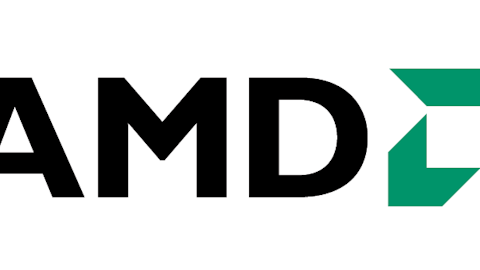Advanced Micro Devices, Inc. (NYSE:AMD) shares were down 4.59% on the day the $1.52 billion semiconductor company was scheduled to release its financial results for the second quarter. However, after announcing a net loss of $0.17 per share, which was in line with the estimates, and $942 million in revenues, which matched the guidance provided by the company in its warning on July 6, the stock has risen by 1.60% in pre-market trading. Sales from the Computing and Graphics segment fell by 54% to $379 million on a year-over-year basis, owing to weakness in PC demand as well as share loss in the CPU/GPU segment. The Enterprise, Embedded and Semi-Custom division contributed $563 million to the top line, a decline of 8% from last year. A reduction in expenses, primarily from job cuts, led to a softer landing for the company however. In this regard, GAAP R&D spending fell by 15% from the same quarter last year to $235 million, while MG&A expenses slid by 13% to $134 million. However, this wasn’t enough to prevent the gross margin from falling to 28% compared to 35% in last year’s June quarter. Advanced Micro Devices, Inc. (NYSE:AMD)’s stock has slid by nearly 30% year-to-date.

Smart money had a bullish outlook towards Advanced Micro Devices, Inc. (NYSE:AMD) during the first quarter. Among the funds that we track, 15 had invested a total of $36.33 million in the company at the end of March, compared to 12 firms with $28.34 million in holdings at the end of the previous quarter. The stock was trading nearly sideways in the first three months.
Why do we pay attention to hedge fund sentiment? Most investors ignore hedge funds’ moves because as a group their average net returns trailed the market since 2008 by a large margin. Unfortunately, most investors don’t realize that hedge funds are hedged and they also charge an arm and a leg, so they are likely to underperform the market in a bull market. We ignore their short positions and by imitating hedge funds’ stock picks independently, we don’t have to pay them a dime. Our research have shown that hedge funds’ long stock picks generate strong risk adjusted returns. For instance the 15 most popular small-cap stocks outperformed the S&P 500 Index by an average of 95 basis points per month in our back-tests spanning the 1999-2012 period. We have been tracking the performance of these stocks in real-time since the end of August 2012. After all, things change and we need to verify that back-test results aren’t just a statistical fluke. We weren’t proven wrong. These 15 stocks managed to return more than 139% over the last 34 months and outperformed the S&P 500 Index by 81 percentage points (see the details here).
Insider trading can reveal valuable insights into the company’s future prospects, as seen from the management’s perspective, hence we keep a close eye on such transactions. However, in the case of Advanced Micro Devices, Inc. (NYSE:AMD) no such activity has been detected so far this year.
Let us instead take a closer look at the segments of the hedge fund industry that are being attracted by the company’s prospects.
How have hedgies been trading Advanced Micro Devices, Inc. (NYSE:AMD)?
At the end of the March quarter, a total of 15 of the hedge funds tracked by Insider Monkey were bullish in this stock, an increase from 12 firms one quarter earlier. With the smart money’s sentiment swirling, there exists an “upper tier” of notable hedge fund managers who were increasing their stakes meaningfully.
Of the funds tracked by Insider Monkey, D E Shaw, managed by David E. Shaw, holds the number one position in Advanced Micro Devices, Inc. (NYSE:AMD). D E Shaw has a $13 million position in the stock, comprising less than 0.1% of its 13F portfolio. On D E Shaw’s heels is Gotham Asset Management, led by Joel Greenblatt, holding an $8.9 million position; the fund has 0.1% of its 13F portfolio invested in the stock as well. Some other hedgies with similar optimism contain Dmitry Balyasny‘s Balyasny Asset Management, Ken Griffin’s Citadel Investment Group, and Cliff Asness’ AQR Capital Management.
Consequently, specific money managers have been driving this bullishness. The aforementioned Gotham Asset Management created the most valuable position in Advanced Micro Devices, Inc. (NYSE:AMD) during the first trimester. The following funds were also among the new AMD investors: Philippe Jabre’s Jabre Capital Partners, Balyasny Asset Management, and Louis Bacon’s Moore Global Investments.
Taking into account the hedge fund sentiment and a decent earnings report, we believe that Advanced Micro Devices, Inc. (NYSE:AMD) could make a turnaround alongside the chip market, which itself is forecast to have a better second half of the year. We recommending buying into the company at this time.
Disclosure: None



